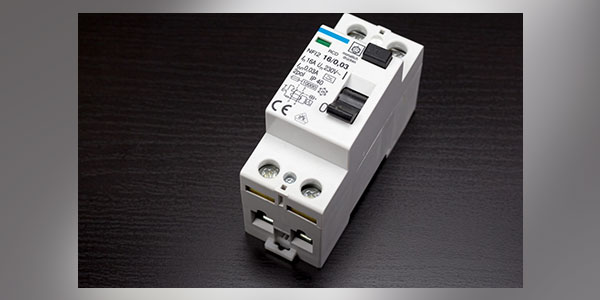Things to Look for Before Buying a Circuit Breaker
When your circuit breaker wears out and needs to be replaced or you are looking to add a new one into your panel to handle the increased power usage that you have, you want to make sure that you are choosing the right circuit breaker for your needs.
There are different types of circuit breakers out there, coming in at different amps, different sizes, and more. Knowing the one that you need is going to make a big difference in helping you to make the right purchase.
Some of the things that you need to consider when you are looking to purchase a circuit breaker for your home include:
Look at the Voltage Rating – The overall voltage rating is an important part of the process when choosing a circuit breaker. You can calculate this by finding the highest voltage that you can apply over all the end ports, the type of distribution, and how this breaker is integrated into the system.
You need to make sure that you are picking out a circuit breaker that has the right amount of voltage capacity to meet the end application. If you do not pick one with enough voltage in it, then you will end up with blown fuses and danger throughout the home.
When picking out a new circuit breaker, it is best to never go lower than what the current breaker is at. It is likely that the electrical needs of the home are higher than when the original breaker was put in. Consider whether it is a good idea to put in a higher voltage rating into the home to be safe.
Frequency – Another thing to look for is the frequency level. Circuit breakers up to 600 amps can be applied to frequencies of 50 to 120 Hz. If the frequency is above the 120 Hz, then it will end up with the breaker having to derate.
During those higher frequency times, the eddy currents and the iron losses are going to end up heating more and this causes the breaker to derate in order to work. The total quantity of deration will depend on the amp rating, the size of the frame, and the current frequency that goes with the breaker.
The good thing to remember is that the higher the ampere rating in that circuit breaker, the greater the derating that is needed.
All of the breakers that are rated higher or more than 600 amps will contain a transformer-heated bimetal and can handle a maximum of 60 Hz. For 50 Hz AC minimum applications, you will need to use a generally available.
Knowing the frequency that you need in a circuit breaker is going to be important. This will help you to only get the right one for your needs, rather than going for one that will cause problems within your home.
What is the Breaker For? You also need to consider what the situation is when you decide to purchase a new breaker for your home. Are you replacing a breaker that is faulty and needs to replace the whole panel at the same time? Or are you trying to add in a new breaker to add to the existing panel?
The reason that you plan to get the breaker will make a big difference in the type you decide to go with. You will need to stick with a certain make and model based on what you plan to do with the circuit breaker.
Choosing the Right Breaker By the Catalog Number – If you plan to replace a faulty breaker, you need to get a specific one that will fit into the panel that you already have. You should take a look at the breaker and see if you can read off the catalog number. If you can, this is going to make a big difference because it will help you find the exact right one.
Even if you are not able to see the catalog number on the breaker that needs to be replaced, then you are able to look at some of the other breakers. If they were all put in together, then you should be able to see the catalog number on one of those to use for your needs.
Maximum interrupting Capacity – You should take a look at the maximum interrupting capacity. This is generally accepted as the highest fault current that the breaker is able to interrupt without making the system fail. Determining this that is supplied by the system can be calculated at any given time that you would like.
The one rule that you need to follow with this is that the interrupting capacity of the breaker needs to be equal or more than the amount of fault current that is delivered right at the point where the breaker is supplied. If you do not apply the right amount here, then the breaker will be damaged too.
The Price – You should also look at the price of the circuit breaker that you would like to use. There is some variance when it comes to the price of this product and you need to be careful about how much you spend on this.
While there may be some circuit breakers that are advertised at the right amperage and more for your needs at a low price, you need to be careful when using these. Even though they may seem great, these less expensive options may not have the high-quality products inside that you want and will fry out quickly and cause damage in your home.
Find a circuit breaker that is made out of high-quality materials and is designed to last a long time. This will help you to get a sturdy breaker that you are sure to love.
The Continuous Current Rating – When we are looking at the continuous current rating, the molded case circuit breakers are going to be rated in amperes at a certain temperature. The ampere rating is going to be the continuous current that the breaker is able to carry where it was calibrated at the specific temperature.
While you are able to choose the temperature that you would like, the best temperature to use for calibrating the standard breaker is at 104 degrees to be safe. This is a steady amount of temperature that will go with the circuit and can help you to get an accurate reading throughout.
Ampere rating is something that the National Electrical Code is going to govern. This can give you a lot of information about the different load cycles that happen in the electrical contracting industry.
There are different rules depending on the type of breaker that you are using so it is a good idea to read up on the rules and see where they are for your home and needs. The right breaker is going to help you make the right decision for your needs.
What is the Brand and Type of the Panel? – You will need to know some information on the panel if you plan to add in a new breaker to your panel that is already there. If you are replacing the whole panel too, then this information is not as important.
Each panel is a little unique so you need to consider what brand and type comes with the panel as well. This will help make sure that you choose the right circuit breaker to help you get the best results and to make sure that the new breaker is going to fit.
The Accessories with the Breaker – There are usually additional things that come with your breaker. You need to consider which of these need to be replaced with the breaker when you purchase a new one or which ones are going to be just fine.
There are different types of accessories that are going to be present with a circuit breaker. Look for things like the undervoltage release, auxiliary, and shunt trip to name a few.
A good way to tell what accessories are present, you should look at the breaker and then see if there are any wires that come out from the sides of the breaker. You can also look to see if there is a sticker on the side. This sticker can help you tell which accessories are going to be needed with that type of circuit breaker.
Choosing the Right Breaker for Your Needs – Replacing a circuit breaker or putting a new one on your panel is going to make a big difference in how well your electricity is going to work in your home. If you need a new circuit breaker, it is important to get the right one to keep your home safe.
When it is time to find the right circuit breaker, you need to be careful to find the right one, the one that can handle all the energy that you want to send to it and will fit with your current panel. Check out the steps above to see how you can choose the right circuit breaker for your needs.




